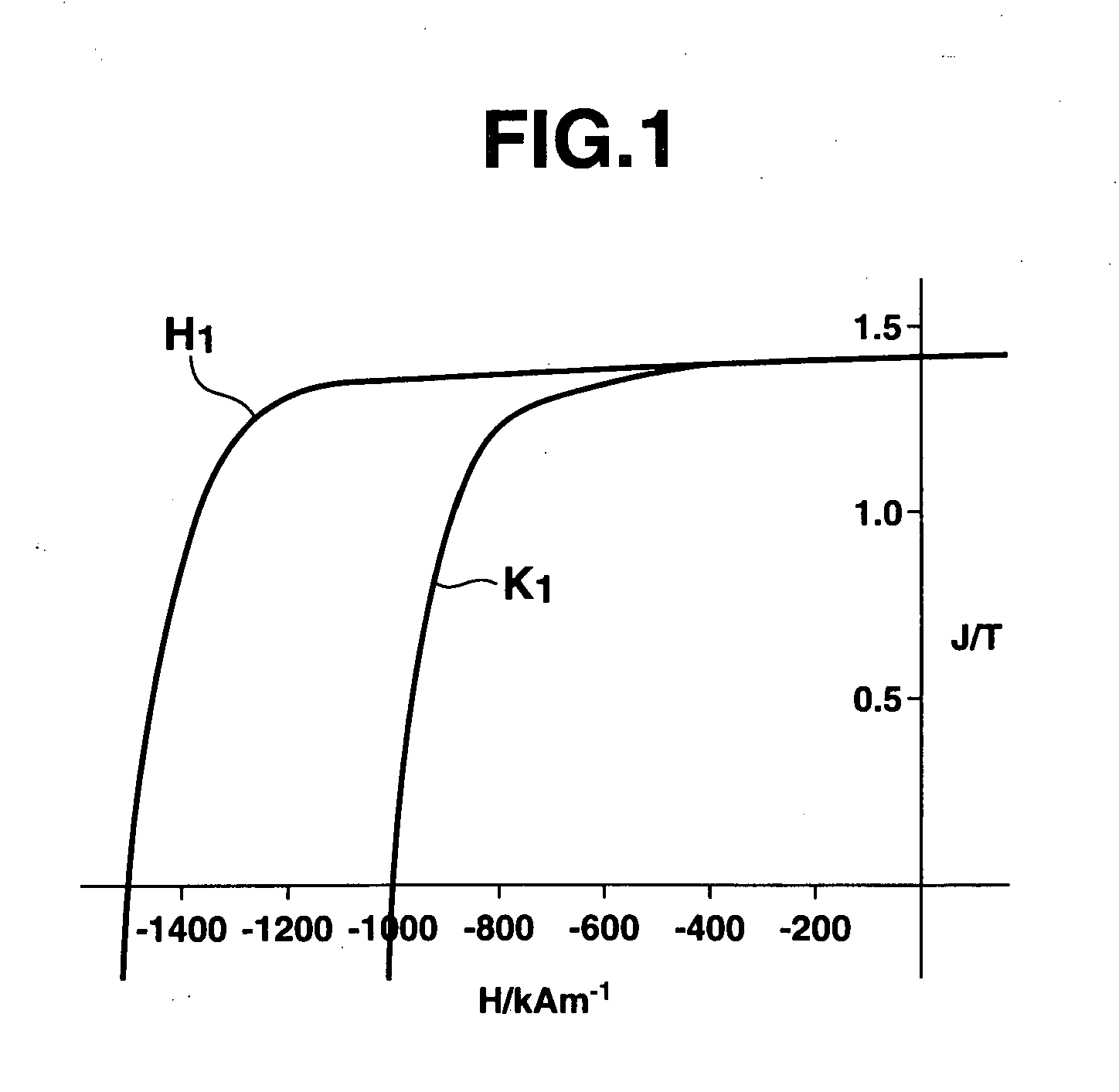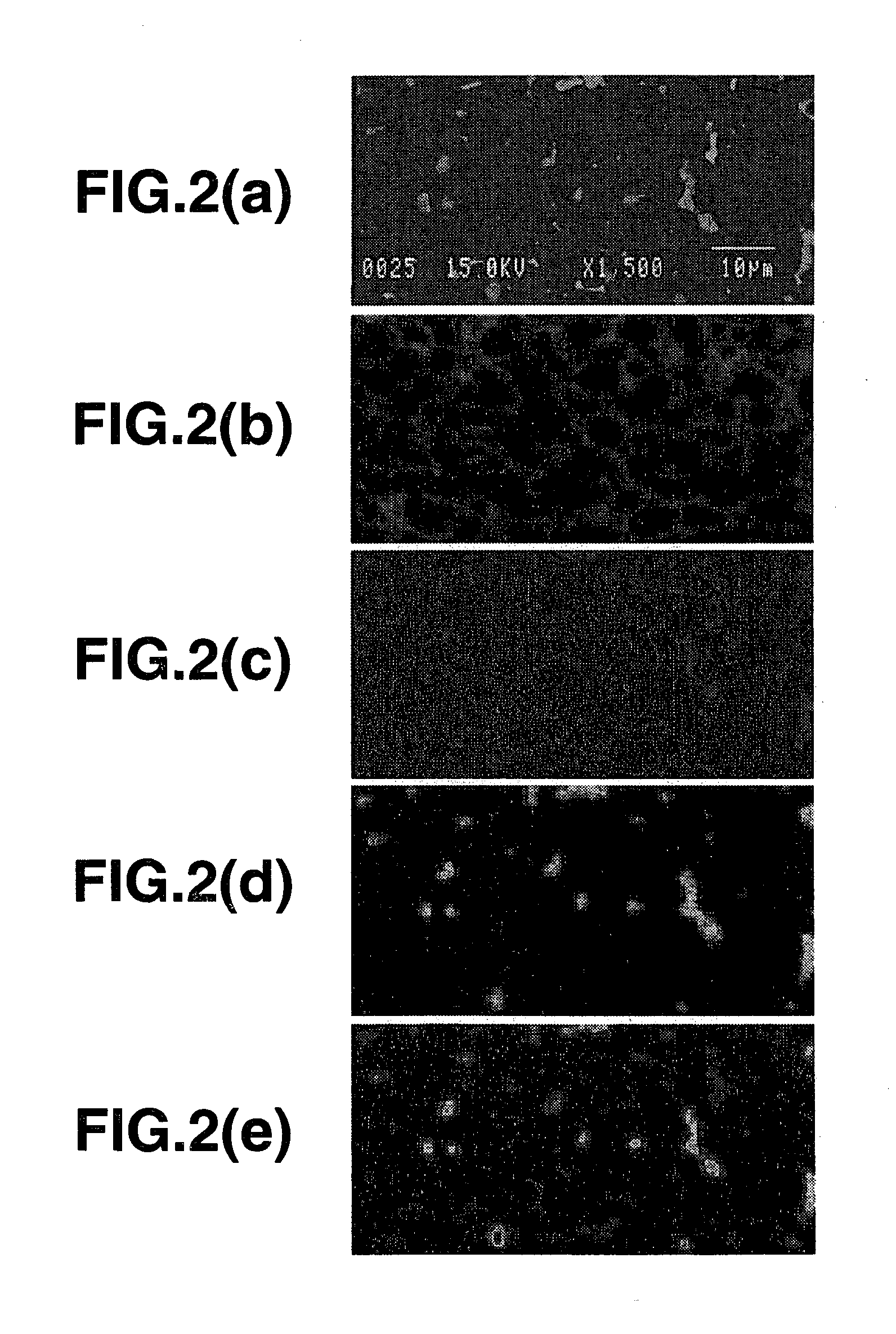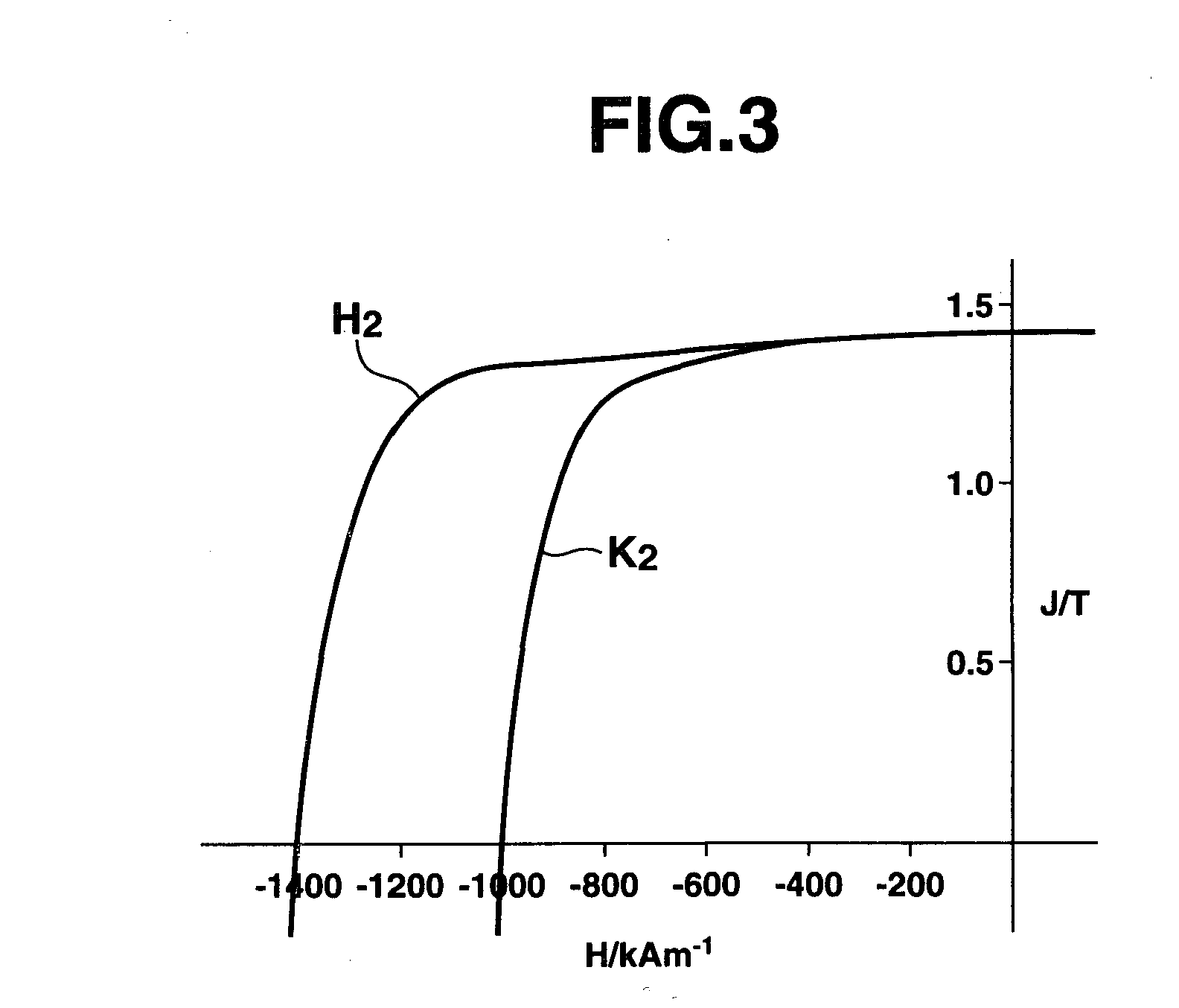Preparation of rare earth permanent magnet material
a permanent magnet material, rare earth technology, applied in the field of preparation of rare earth permanent magnet materials, can solve the problems of loss of remanence, inability to practically accept measurement, extreme productivity reduction, etc., and achieve high coercive force, high productivity, and high remanence
- Summary
- Abstract
- Description
- Claims
- Application Information
AI Technical Summary
Benefits of technology
Problems solved by technology
Method used
Image
Examples
example 2
[0076]By the same procedure as in Example 1, a magnet form of 20 mm×30 mm×3 mm was prepared.
[0077]Dysprosium oxyfluoride having an average particle size of 10 μm was mixed with ethanol at a weight fraction of 50%, in which the magnet form was immersed for one minute with ultrasonic waves being applied. The magnet form was pulled up and immediately dried with hot air. At this point, the filling factor of dysprosium oxyfluoride in the magnet surface-surrounding space was 45%. The magnet form was subjected to absorption treatment in an argon atmosphere at 900° C. for one hour, then to aging treatment at 500° C. for one hour, and quenched, obtaining a magnet form designated M2.
[0078]The magnetic properties of magnet form M2 are also shown in Table 1. The inventive magnet was found to offer an increase in coercive force of 470 kAm−1 relative to the coercive force of the magnet P1 which had not been subjected to dysprosium absorption treatment. A drop of remanence was 3 mT.
example 3
[0079]By the same procedure as in Example 1, a magnet form of 10 mm×20 mm×1.5 mm was prepared.
[0080]Terbium fluoride having an average particle size of 5 μm was mixed with ethanol at a weight fraction of 50%, in which the magnet form was immersed for one minute with ultrasonic waves being applied. The magnet form was pulled up and immediately dried with hot air. At this point, the filling factor of terbium fluoride in the magnet surface-surrounding space was 45%. The magnet form was subjected to absorption treatment in an argon atmosphere at 900° C. for one hour, then to aging treatment at 500° C. for one hour, and quenched, obtaining a magnet form designated M3.
[0081]The magnetic properties of magnet form M3 are also shown in Table 1. The inventive magnet was found to offer an increase in coercive force of 800 kAm-1 relative to the coercive force of the magnet P1 which had not been subjected to terbium absorption treatment. A drop of remanence was 5 mT.
PUM
| Property | Measurement | Unit |
|---|---|---|
| particle size | aaaaa | aaaaa |
| temperature | aaaaa | aaaaa |
| volume fraction | aaaaa | aaaaa |
Abstract
Description
Claims
Application Information
 Login to View More
Login to View More - R&D
- Intellectual Property
- Life Sciences
- Materials
- Tech Scout
- Unparalleled Data Quality
- Higher Quality Content
- 60% Fewer Hallucinations
Browse by: Latest US Patents, China's latest patents, Technical Efficacy Thesaurus, Application Domain, Technology Topic, Popular Technical Reports.
© 2025 PatSnap. All rights reserved.Legal|Privacy policy|Modern Slavery Act Transparency Statement|Sitemap|About US| Contact US: help@patsnap.com



